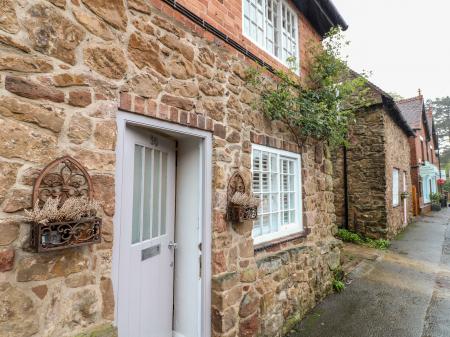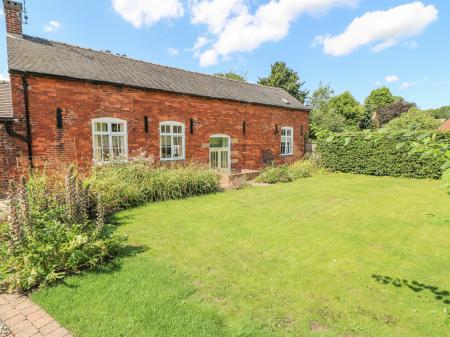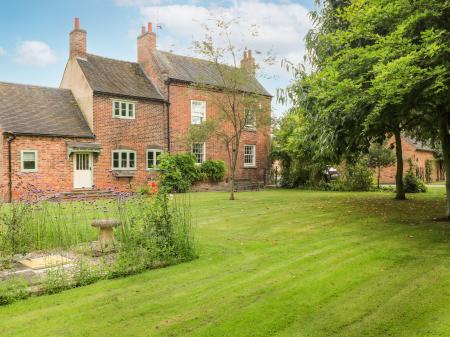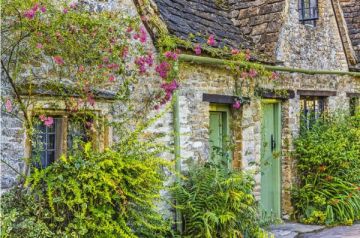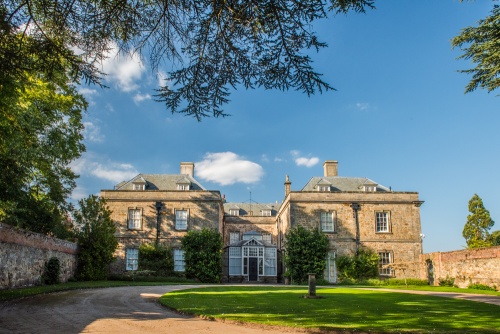
History
In 1133 Henry I established the Bishopric of Carlisle and named Adeluff, the Prior of Nostell, to become the first Bishop of Carlisle. Part of the original endowment was the church and rectory of Melbourne. A bishop needs a Bishop's Palace, and Melbourne was the site chosen.
The palace was transformed several times over the centuries but it can claim to be the forerunner of the current Melbourne Hall. The Bishops needed a refuge from the tumultuous - and dangerous - northern frontier with Scotland during the 13th and 14th centuries, and Melbourne became a safe retreat. They used the church as their cathedral and the Hall as their palace.
When Carlisle became a safer place to be during the 15th century the bishops no longer needed to use Melbourne as a retreat so they leased the property to tenants. One of the first recorded tenants was Thomas Cromwell, Lord Chancellor under Henry VIII.
Unfortunately, the tenants did not keep the Hall in good repair, and when Sir Francis Needham of London wanted to live at Melbourne in 1595 he decided it would be preferable to pull down the existing Hall and build a completely new house. The essential layout was a Great Hall flanked by wings, just as it is today.
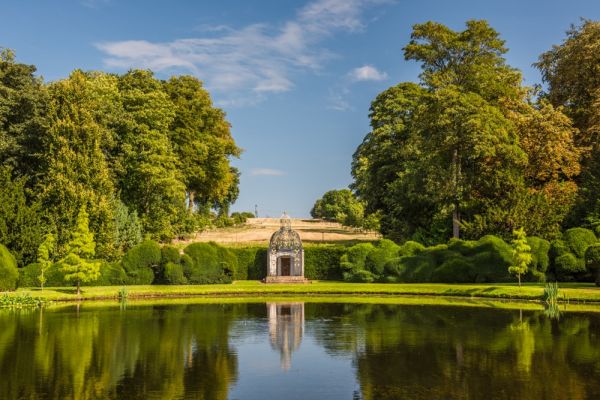
The first Coke to own Melbourne was Sir John Coke, Secretary of State to Charles I. Coke purchased the house in 1629 as his retirement home and immediately set about panelling the major rooms in oak and quarrying building stone from the ruins of Melbourne Castle, which had been demolished a few decades earlier. The new Melbourne Hall was very much in the Elizabethan style; Coke himself was later nicknamed 'The Last Elizabethan'.
When the Civil War broke out Sir John fled abroad, and his son, another Sir John Coke, followed him in 1648. The younger Coke died in exile, and his heir had to buy back the family estates from Parliament. A later Coke, Colonel Sir John Coke, raised a troop of horse in the 1688 revolt that put William and Mary on the throne.
Later notable Cokes include the 1st Lady Melbourne, known for her scandalous reputation. Blessed with a more respectable mien was Lord Melbourne, Prime Minister under Queen Victoria. Melbourne, Australia, was named for Lord Melbourne while he was Prime Minister in 1837.
As for the house, the most impressive room is the Drawing Room, built to a symmetrical plan, specially laid out to accommodate several very large portraits by Sir Godfrey Kneller.
The Dining Room is much as it was designed by Sir John Coke, and features unusual tapestry seats, and a cheese board given by Queen Victoria to Lord and Lady Melbourne.

The Inner Hall displays a special table built for Admiral of the Fleet William Kerr to use while at sea. Other major rooms display period furniture, fine art, and family porcelain. In addition to the rooms normally on show upstairs rooms may also be viewed by previous appointment.
The Gardens
The gardens that surround the house were laid out by the Rt. Hon. Thomas Coke in the early 18th century in the manner popularised by Andre le Notre, designer of Versailles. Le Notre may have done more than simply inspire the gardens; he may have helped design them. We do know that Coke studied architecture and garden design in France, and met with Le Notre.
In 1699 Coke submitted a garden design to the firm of London and Wise, who carried out the actual building work. Trees and shrubs - including 600 lime trees - were brought from Brompton Park.

The result is a delight, with quiet streams flowing through the garden, crossed by small footbridges, and pathways leading beside colourful flower beds.
Coke extended the gardens in 1704 with a formal area east of the mansion. You can see the original plans along with historical documents and bills in a visitor centre exhibition called 'Up the Garden Path'.
The gardens we see today contain several important historical buildings. Among these is a wrought iron arbour known as The Birdcage, built in 1706. The Birdcage was the work of Robert Bakewell, a well-known iron-smith who lived at Stone House, opposite Melbourne's ancient parish church. Bakewell also designed the ornate ironwork fence separating the gardens from the neighbouring lake known as The Pool, but he is best known for his work on Derby Cathedral.
Another historic structure is a 17th-century dovecote, remodelled in a hexagonal shape as The Muniment Room.

Flanking the Great Basin pool are statues of Andromeda and Perseus, installed by the Rt. Hon. Thomas Coke at a cost of 45 pounds. The statues were designed by Jan Van Ost (also known by the Anglicised form of his name, John Nost).
Below the house is a yew tunnel, which leads to the 'wishing well' (in reality a grotto, where sulphurous water bubbles up.
Look for The Four Seasons Urn, near the kitchen garden. This richly decorated urn was a gift to Coke from Queen Anne, in recognition of his work as her Vice Chamberlain.
At the time it was designed, the gardens at Melbourne were considered unusual. Today they must be considered one of the most important and influential English gardens ever created.

Do take the time to take the public footpath that leads beside the garden, along The Pool. On a summer evening, this is a delightful place to stroll.
Note that the Hall itself has limited opening times; usually just for a few weeks each year when the family is not in residence. The historic gardens, however, are open regularly and are well worth a visit to see even if the house is closed.










 We've 'tagged' this attraction information to help you find related historic attractions and learn more about major time periods mentioned.
We've 'tagged' this attraction information to help you find related historic attractions and learn more about major time periods mentioned.